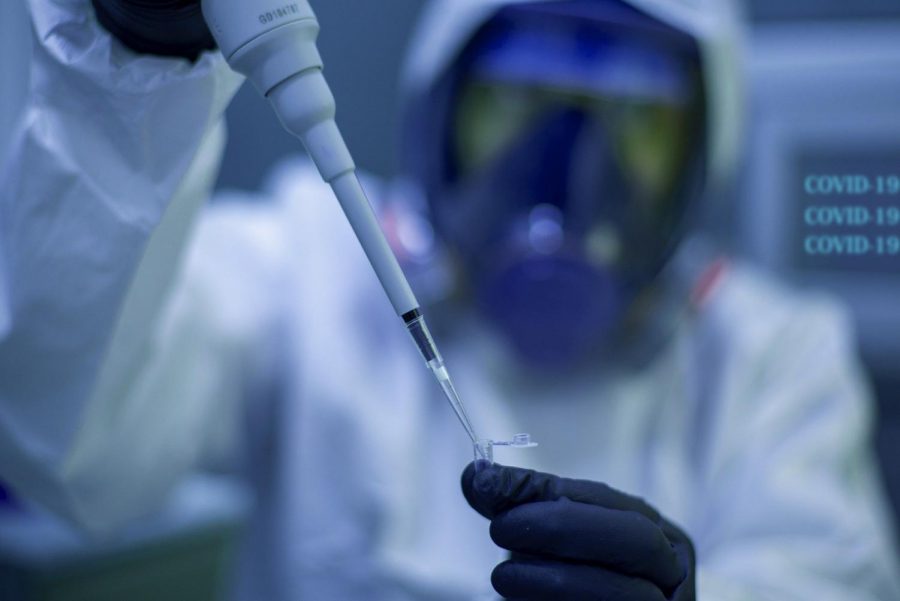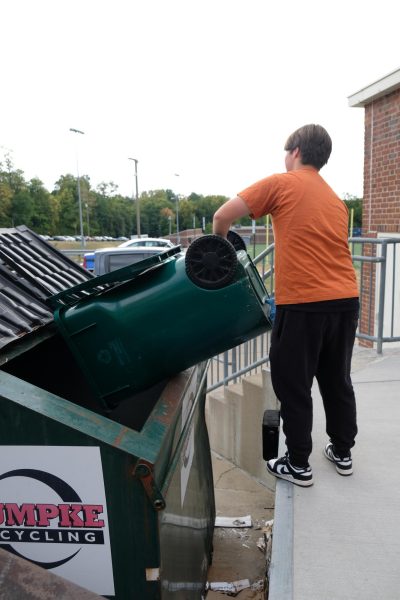The world of vaccines: to harm or help
Courtesy of Fernando Zhiminaicela/pixabay
A vaccine for COVID-19 was recently approved by the FDA for distribution, fueling the longstanding debate over vaccines.
Imagine you’re in the hospital, fighting for your life from a disease that could have easily been prevented. Millions die every year from diseases and viruses that could have been avoided by receiving a vaccine. By getting vaccinated, you are not only protecting yourself but the people around you.
Within the past year, the virus known as COVID-19 has plagued our country. Millions have lost family members, jobs and even lives.
What has happened is terrible but a solution may be making its way. It can take years for scientists to develop a vaccine for a virus, but biotechnology companies such as Moderna and Pfitzer may be on the verge of getting a vaccine. Both companies have requested an Emergency Use Authorization from the FDA which would allow them to send out their vaccine for public use. The FDA issued an EUA for the Pfitzer vaccine on Dec. 11.
Getting a vaccine approved for widespread use is a crucial step towards getting back to normal living, but having a vaccine readily available is just one piece of the puzzle.
For people like Bareen Abdulrahman, ‘26, getting a vaccine is not something she would do in the near future. “All the vaccines that are coming right now, even though some might work… they haven’t gone through all the stages of making sure they’re safe,” she said.
With how fatal this pandemic has been, earning people’s trust and ensuring their safety is a crucial factor in getting people to take a vaccine. Vaccines are only given out to the public after they have been tested and ensured safe by a long list of doctors, scientists and test subjects.
But the rush in finding an effective vaccine is not the only reason why people would be hesitant to get vaccinated. As long as vaccines have been around, political, fictional, and uneducated fears have entered the minds of the people around us.
In the 1800s, the first vaccine ever created, the smallpox vaccine, caused many to worry and faced a lot of criticism. This vaccine was created using parts of a cowpox blister, another disease. Injecting yourself with a disease to cure another seems like a crazy idea, but once people started receiving the vaccine, it worked and saved countless lives.
Some people are unable to receive a vaccine because of allergies, pre existing conditions, age, or religious beliefs. These people are more susceptible to the disease and have a higher risk of infection. Vaccines are given to prevent us from spreading diseases and experiencing major symptoms.
One false belief that surrounds vaccines is that they don’t actually protect you and could potentially be harming you.
In diseases such as measles, we see brain injury. In polio, we see disability. In chickenpox, we see scarring. In all these diseases, we see death. All of these effects could be avoided in you or someone you know by simply getting vaccinated when you are supposed to.
If you receive a vaccination, you can still get sick from that virus but you will experience milder symptoms in contrast to not getting the vaccine and facing death.
Thimerosal, a mercury-based ingredient used in certain vaccines, and the measles, mumps, and rubella (MMR) vaccine have faced multiple accusations of causing autism in those who receive them. This belief is not backed by any scientific research and has even been tested by many studies, all of which conclude that the MMR vaccine does not cause autism.
The flu is a virus that the world faces every year and has many strands. When you get the vaccine, it does not protect you from all strands of the flu. In order to continually protect yourself and others from this virus, you must get vaccinated every year.
But what about the people who don’t get vaccinated? It’s a law that in order to attend public school, you must get certain vaccinations. Some doctors even turn away patients who are not up-to-date on their vaccines because bringing a non-vaccinated patient into an environment full of immunodeficient children puts others in danger.
When people ignore their doctors and the advice of scientists over what they may have heard, they are putting themselves and those around them at a serious risk.
Because of vaccines, many diseases and viruses have virtually been eradicated within the United States.
In 2002, measles was said to be eradicated in the United States. With vaccines, there comes the responsibility with keeping up with them. In order to keep a virus from spreading and out of our environment, we must continually receive that vaccine because nothing stays in our immune system forever.
Even though measles was eradicated, the vaccine is necessary to keep it that way. In 2014, because certain parents started refusing to vaccinate their children, over 600 cases of the measles were reported. This can happen with any disease and without protecting ourselves, we leave a big risk.
Many students at WHHS feel that receiving a vaccine is important and trust that it can keep them safe. Time and time again, vaccines have proven to work and protect the people who take them.
Most people have never faced side effects from receiving a vaccine and if they do, it’s mild and only for a few days.
Every year, about 50,000 adults in the United States die from diseases that could easily be prevented by a vaccine.
For people who are unable to get vaccines, they rely on everyone around them to keep them safe. As a person, you have to decide if facing a needle and syringe is worth keeping yourself and others safe from something that could easily be prevented.
All views shared in the Opinions section of The Chatterbox belong to their respective authors, and may not represent the views of the publication as a whole.
Your donation will support the student journalists of Walnut Hills High School. Your contribution will allow us to purchase equipment, cover our annual website hosting, printing costs and offset competition and conferences fees for students.













